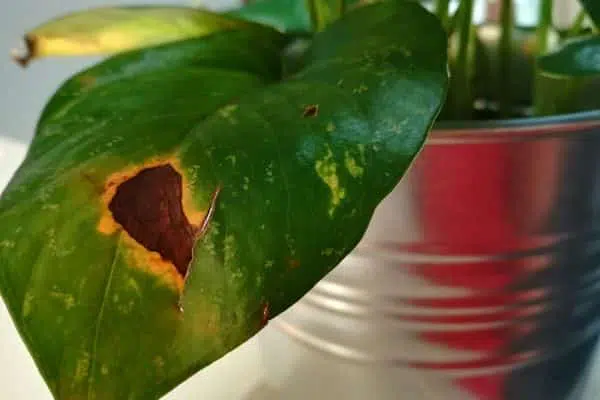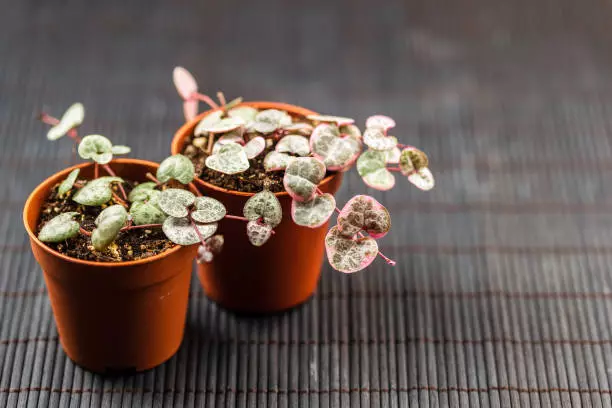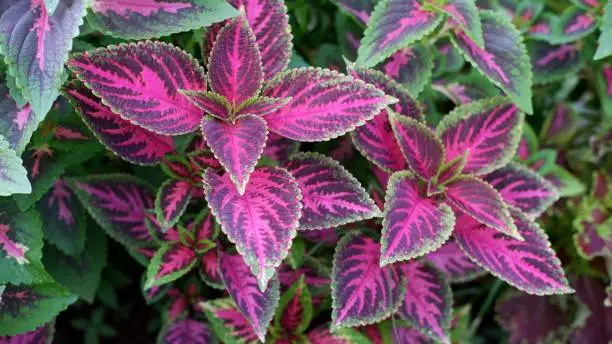East-facing windows are usually great for plants that like morning sunlight or moderate light to thrive since the sun rises in the east. Not all plants can grow well in the morning sunlight so it is important to choose your houseplants with care. So, what plants prefer east-facing windows?
The best east-facing window plants include heartleaf philodendron, moth orchid, Japanese fatsia, fiddle leaf fig, hoya plant, calathea, umbrella tree, dracaena fragrans, and parlor palm. These plants prefer bright indirect morning sun and will thrive well when placed near an east-facing window.
The exposure of your windows is very vital when deciding on which houseplants can prosper there. Some plants are okay with dim light, while others are happy with bright light. Most houseplants prefer east-facing windows since the sun exposure through them is not extreme.
Is an east-facing window good for house plants?
The bright indirect light of an east-facing window is the perfect location for houseplants because most of them don’t need extreme or direct sun exposure. Partial sunlight exposure works best for them.
The morning sun works well for plants in their early stages of growth. This means that houseplants located in an east window will most definitely grow more energetic and more robust. The sun exposure through the east-facing window is of proper natural light levels and less extreme heat.
Best east-facing window plants to grow indoors
Choosing a plant can be intimidating because of the lighting factors at play. Having settled on the east-facing window as the ideal exposure for houseplants, here are the best plants that thrive in that direction.
1. Heartleaf philodendron (Philodendron Scandens)
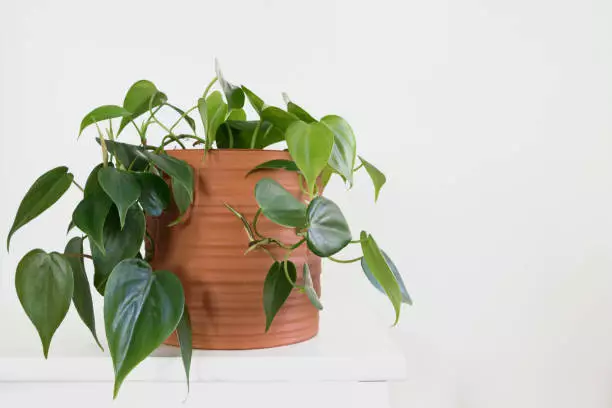
The philodendron is a perfect choice for beginners who do not know much about plants but desire to own a houseplant. This plant is a favorite because it can grow in almost any indoor setting/direction. Going wrong with a philodendron for a start is quite impossible.
The heartleaf philodendron is an energetic climber that needs support to avoid breaking off the stems when it droops. However, if you do not want to support it as it climbs your wall, put it in a flowerpot or shelf where the long stems can fall over to make the plant bushier and more appealing.
RELATED: HOW TO MAKE POTHOS PLANT FULLER AND BUSHIER
Requirements: cut or prune the stems for a dense re-growth. Keep the soil moist at all times and fertilize it all through the year, more deeply in summer. Don’t get worked up by a few leaves falling unless it becomes too much. Wash or wipe off the leaves once a month to keep them free of dust.
2. Moth orchid (Phalaenopsis Spp)
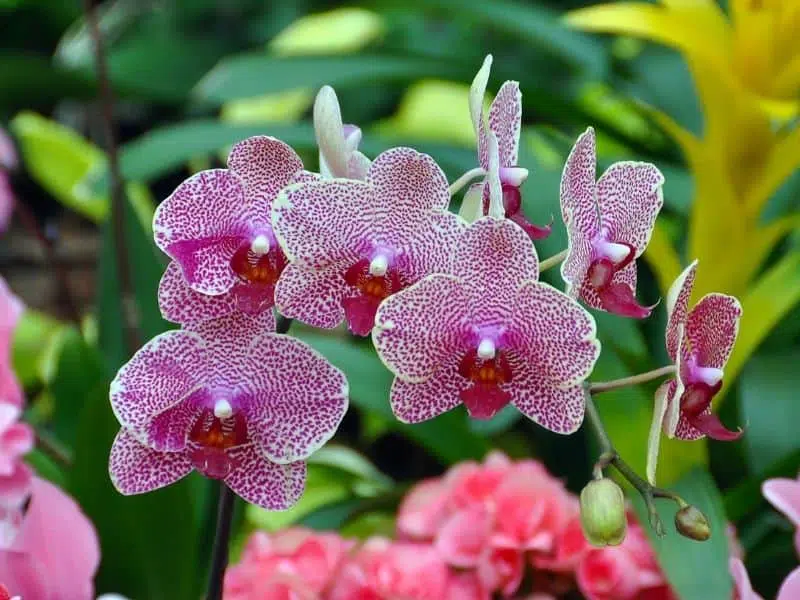
The Moth Orchid is a flowering plant. Most flowering plants that grow indoors love bright or even direct sunlight, but the famous Moth prefers east-facing windows. Remarkably, this orchid will also give you beautiful weekly blooms.
Moth orchids prefer a tad higher temperatures in the day, generally between 21 to 27 degrees Celsius (70-80 degrees Fahrenheit). However, they can still thrive if the temperatures are slightly lower or slightly higher. Because they like somewhat above-average humidity levels, consider growing them on a pebble tray.
Requirements: Water orchids 1-2 times a day when the roots appear silverish and the potting mix is a little wet, and then empty rigorously. Nourish with quarter-strength fertilizer once a week, reducing when the plant is in blossom. Ensure that there is enough airflow within the house.
RELATED: HOW OFTEN TO WATER YOUR ORCHIDS
3. Youth on age (Tolmiea menziesii)
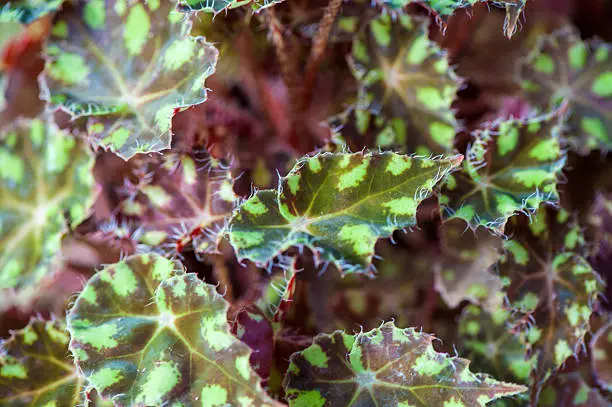
Proliferate youth on age, also known as the piggyback plant, is a common indoor plant that thrives in a cool and indirect sun location. Oddly, it derives its name from the sprouts that grow on top of the present leaves. We recommend you to place it where you can appreciate the leaves as they overhang down on the side of a shelf or brinks of the pot.
The Tolmiea plant loves humidity. Plants that cherish a wet and moist atmosphere would appreciate slightly higher humidity. Simply water spraying may not offer enough of a boost in medium humidity levels, since its effects will fade away quickly.
However, you can attempt to grow them on pebble trays, putting them in a kitchen, or grouping them near a humidifier.
Requirements: Keep the soil moist but not water-logged, and fertilize sparingly (almost a quarter of the suggested amount) once a week from spring to autumn and then decrease in winter. Keep the plant off direct sunlight, dry air, and extreme heat. You should also prune it regularly.
4. Japanese Fatsia (Fatsia Japonica)
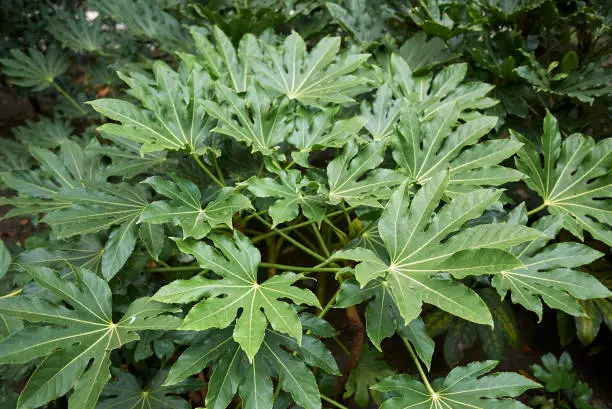
With morning sun, the Fatsia is an excellent east-facing window plant. If you are looking for another space-filling houseplant, then the Japanese Fatsia fits perfectly because of its attractive and striking foliage. It is a shade-loving growing bush.
It is ideal for an indoor setting, away from direct sunlight. The tall shrub with firm and profound leaves enhances the tropical feel indoors. The Fatsia is also easy to maintain. You can place the Fatsia on a sheltered porch but be ready because their big and thick leaves tend to attract mealybugs and aphids. It is not poisonous to pets, but it emits fluids that can cause skin irritation.
Requirements: since they are not complicated, the Japanese Fatsia prefers constant moisture in draining soil and faint fertilization during the growing period. Their strange demand is having a cold period of about 50 degrees Fahrenheit, yet they die when it is freezing.
5. Fiddle leaf fig (Ficus Lyrata)
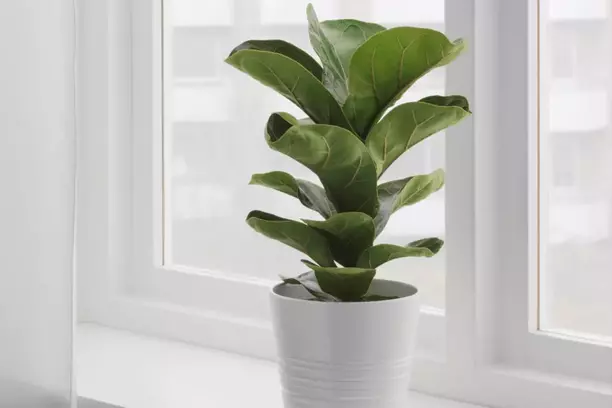
Growing the famous and adorable Fiddle leaf Fig is the advantage that comes with having an east-facing window. This trendy plant only requires an average of 4 hours of sunlight; hence morning sun is just perfect. This morning sun exposure enables you to avoid the dropping and browning of leaves problem. Unfortunately, it is toxic to pets.
Requirements: you will need to maintain uniform moisture and use well-drained soil. This plant also requires a higher humidity level. Fertilize it regularly and clean its broad leaves to avoid pests and allow proper breathing.
6. Hoya plant (Hoya Carnosa)
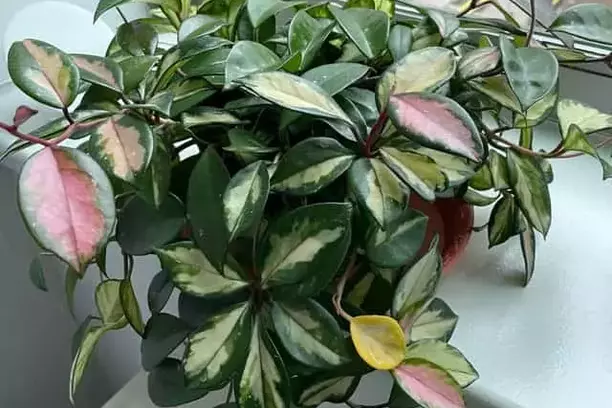
Hoyas are typical for hanging, tabletops, or windowsills with attractive foliage and pretty flowers. They prefer bright indirect light, which is hard to achieve in most cases, but the east-facing windows give a close and easy solution. So, if you have tried the Hoyas before with no success, give them another shot in your eastern window. Though their sap can cause skin irritation, they are non-toxic to pets.
Requirements: because they are diverse from succulent to tropical-like, their needs and care also differ. Grow them in fertile organic soil, or use light fertilization. They dislike regular re-potting and prefer an excess amount of water. A preference for high humidity is common for them though others would still do well with less.
7. Prayer plants (Maranta Leuconeura)
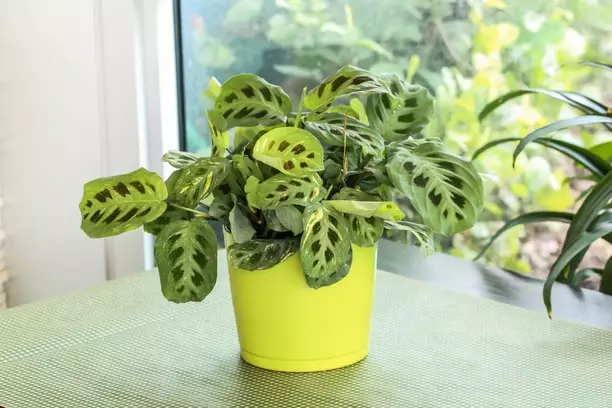
They thrive well in partly shaded or dappled light; hence the prayer plants make a perfect fit to display in the east-facing window. The extreme sun can cause the leaves to fade.
Requirements: The Prayer plant prefers high humidity and well-drained soil to thrive. The soil should not be waterlogged but just wet. Feed the Prayer plant with an all-purpose fertilizer every two weeks and use warm water. Keep the soil dry in winter, and because of the standard winter dry air, place the Prayer plant, among other plants, to enhance more humid settings. Don’t allow the Prayer plant to sit directly in water instead, place a bowl of water nearby, or even set the container on top of a dish with pebbles and water. Perfect temperatures for the prayer plant are from 16-27 C (60-80 F).
8. Umbrella tree (Schefflera actinophylla and Schefflera arboricola)
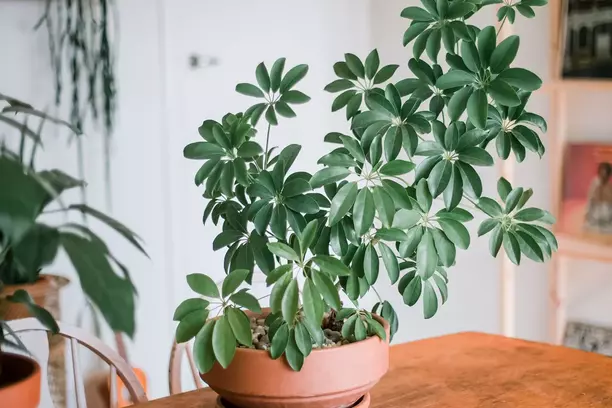
Both the S. actinophylla and S. arboricola umbrella trees are old preferences that are being revived. The first has leaves that can spread 1 foot from corner to corner, while the second has much smaller leaves. It is not so short since it can reach as high as 6 feet tall. With low maintenance and easy to care schedule, these plants can add graceful foliage to your home. They are both toxic to pets.
Requirements: Allow the plants to dry out a little, then water meticulously and discharge any surplus. Use fertilizer while they are growing, mostly during spring to fall, and collect any yellow leaves—prune branches to shape.
9. Calathea
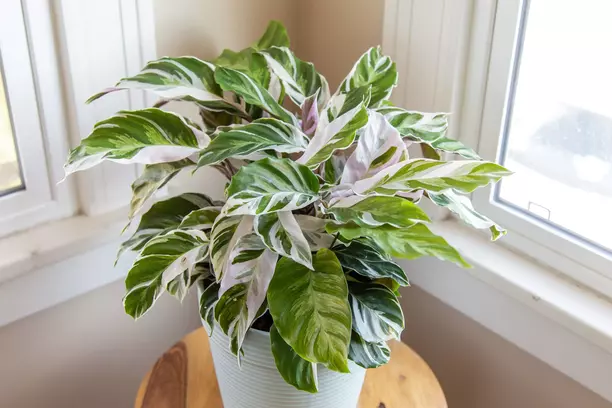
The plant has some of the most stunning leaves worldwide. They have brightly marked upright, four-sided leaves in an alluring display of colors attached to long, erect stems. It has different markings. That’s why it’s sometimes referred to as peacock plant, zebra plant, and rattlesnake plant to reflect.
Calatheas are great east-facing window plants, having a preference for indirect bright light settings. But, even with the correct light, these plants can be fussy. They are also petting safe, but several reports of indigestion are present.
Requirements: They need consistent watering without ever getting waterlogged. Most need high-level humidity to prosper. A room humidifier may be essential, but you can sometimes cope with water trays and misting. It’s preferable to use filtered, prepared water to avoid leaf patches. They like temperatures above 60F. Should be well-fertilized using a liquid fertilizer.
10. Boston fern (Nephrolepis Exaltata)
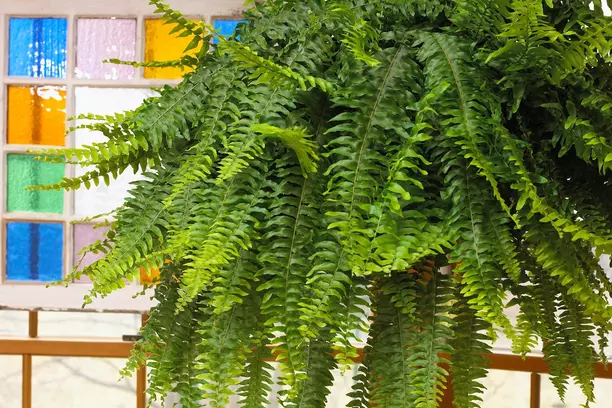
The Boston fern is a common home-setting houseplant showing off its drooping fronds in a hanging basket or an elevated plant stand. There are a couple of gorgeous varieties with long, elegant, decorated tiny leaves. It is quite reliable, easy to spread, and can thrive in drier conditions. An extra advantage is that they can be used as pedestals, part of a grouping, hanging baskets, or lavish sample plants on the east windowsill.
Boston fern is pretty hassle-free, but it sometimes attracts whiteflies, scale, and mealybugs.
Requirements: Boston ferns like better indirect light but will get frail if light levels are too low. Have the soil consistently and use fertilizer sparingly (almost a quarter of the mentioned dose once a week) all through the year. Remove dead leaves and sometimes rotate the plant to have it growing steadily. You can reduce watering your fern, but don’t allow it to dry out. A fertile loamy organic soil would suit its perfect growth.
How many hours of the sun do east-facing windows get?
The sun rises from the east to the west. Therefore, the East facing window gets the first fresh dose of sunlight in the morning hours. Most of the time, direct sunlight stops shining through these windows by mid-morning to midday.
Even if an eastern exposure means the sun shines directly on the plants, it may not be harmful since it’s only for a far shorter period. It is less likely to burn indoor plants as compared to western or southern exposures.
Generally, the east-facing window will get your plants an average of 5 hours of morning light immediately when the sun rises and about 15-24 degrees Celsius (perfect temperature for indoor plants).
Finding the perfect position for your plants takes some research. The location of the sun is at all times changing with the seasons. Therefore, you may need to rotate your plant a few times before you find a decent position. You can place plants either in different windows or altered distances from the east-facing window to give them their perfect light. If you have a Plant Maid, you can press the sensor button to convey the average sunlight for the last 24 hours.
